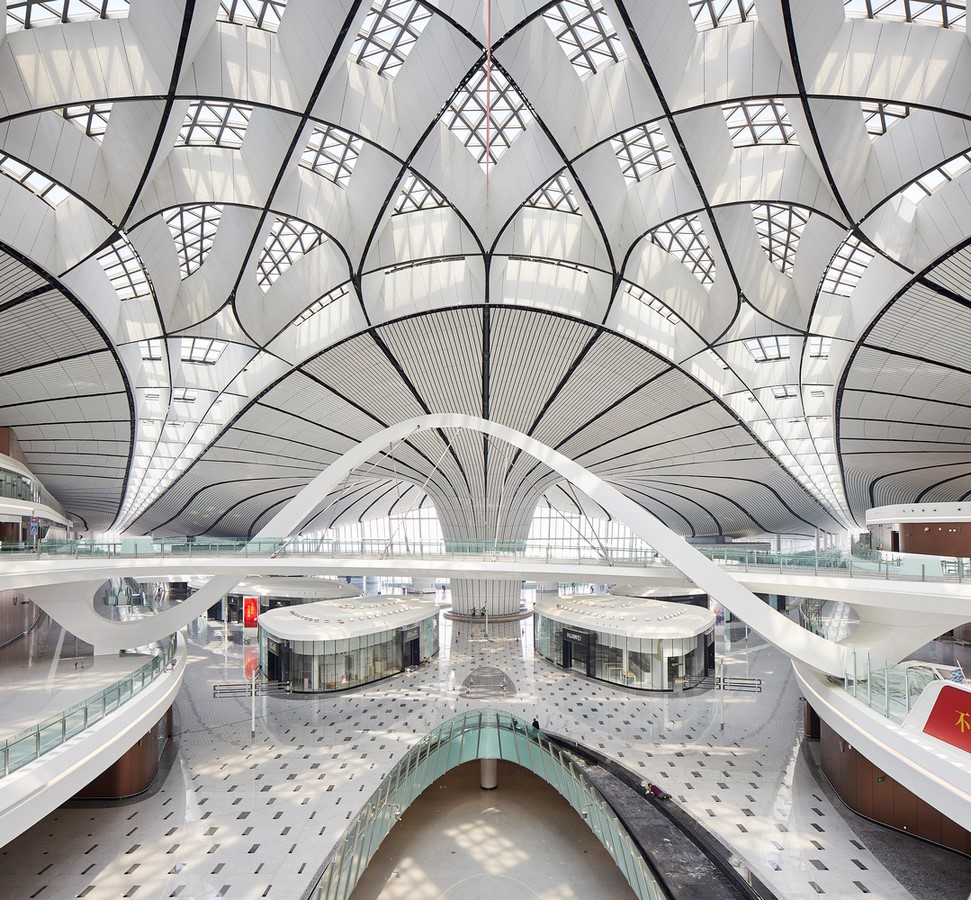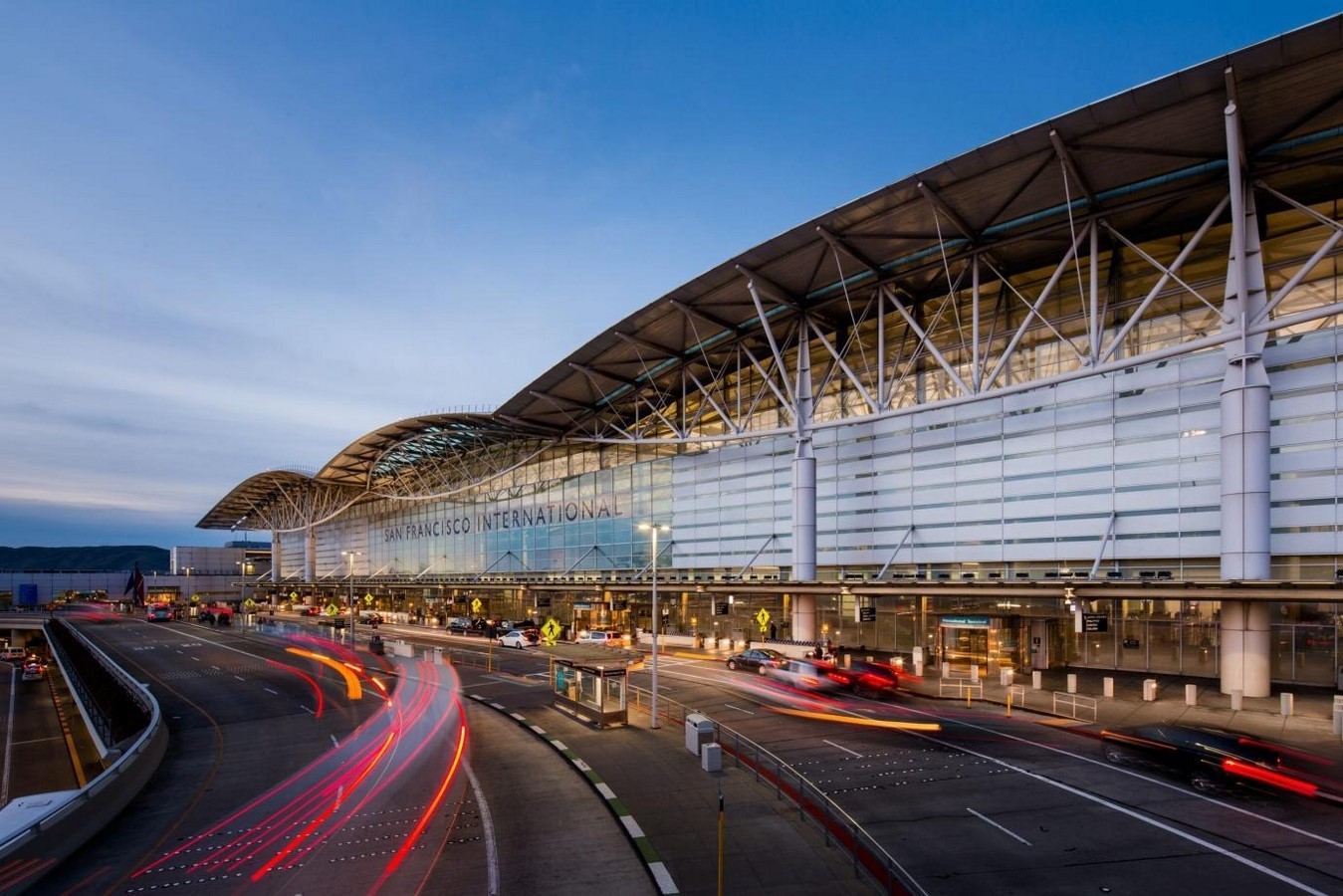Table Of Content

Located on the northern part of Samui island near Bo Phut Beach, the Samui Airport began construction in 1982 and officially opened in April 1989. Privately owned and operated by Bangkok Airways—although Thai Airways began flights in 2008—the airport matches its picturesque location with a design meant to mimic its natural surroundings. Clad in white aluminum panels and featuring stylized Islamic ornamental designs, the structure gives the terminal a brightness that changes according to the time of day. It’s also an excellent example of how a contemporary building can incorporate traditional cultural motifs.
Dezeen Agenda newsletter features Heatherwick's "homely" plans for Changi Airport
In the airport design sector, the company is most known for Heathrow’s Terminal 5 (T5) building, which opened in March 2008 after 19 years of design and construction, and the longest public inquiry in British history. Airport projects themselves are homage to just how far airport design constraints and demands have changed – a line can quite often be drawn between the capabilities of an older airport in contrast to the new, with hard-won experience linking the two. The U.S. The Department of Energy (DOE) defines a net zero building as an energy-efficient building where, on a source energy basis, the actual annual delivered energy is less than or equal to the on-site renewable exported energy. Therefore, a net zero airport possesses renewable energy sources with a generation capacity that is equal to the airport’s total energy consumption, without the use of onsite combustion. The under-construction terminal at Delhi Noida International Airport has been billed as "India's greenest airport" by its design team, a collaboration between architecture firms Nordic Office of Architecture, Grimshaw, Haptic and consultants STUP.
Changi International Airport, Singapore
AI is going to radically reshape the airport experience - Fast Company
AI is going to radically reshape the airport experience.
Posted: Mon, 11 Dec 2023 08:00:00 GMT [source]
The inner surface of the roof replicates the surface texture of a leaf and the colour schemes of brown and cream represent the surrounding desert context of Jordan. The vast majority of airfields throughout the world are still relatively simple facilities. Even now, many have unpaved runways or at most lightly paved runways with tiny terminal or administration buildings, a rudimentary control tower, and crude landing aids. Such facilities can deal only with light aircraft and a negligible flow of passengers or freight. The oldest and simplest layout for passenger terminals is the open apron design, in which aircraft park on the apron immediately adjacent to the terminal and passengers walk across the apron to board the aircraft by mobile steps.
Futuristic Airports Designed by Famous Architects
Frankfurt International Airport in Germany and Schiphol Airport near Amsterdam still use such terminals. In the late 1970s, pier designs at Chicago’s O’Hare and Atlanta’s Hartsfield successfully handled in excess of 45 million mainly domestic passengers per year. In order to cut down walking distances, some terminals, beginning in the 1960s, were designed on the satellite concept.
Beijing Daxing International Airport / Zaha Hadid Architects

Once a partner has been selected, Davies says preparation and prior investigation is key to keeping costs low. A thorough prototyping phase before construction began on the T5 building exterior ensured that few unexpected hitches took the team by surprise when it arrived at the site. Davies describes pre-planning as “an effective way of eliminating unknowns, and cost escalation is partly from unknowns”.
Airport Lighting and Signing
Frequently, the aircraft maneuver in and out of the parking positions under their own power. As airports grow, however, it is impossible to have large numbers of passengers walking across the apron. In this case, it is common to have terminals designed to the linear concept, with aircraft parked at gates immediately adjacent to the terminal itself. Usually, air bridges are employed for transferring passengers directly between the terminal building and the aircraft. The limitation of the linear concept is usually the long building dimensions required; these can mean long walking distances for transferring passengers and other complications related to building operation. In practice, building lengths tend to be limited to approximately 800 metres (2,650 feet).
The requirements for airports have increased in complexity and scale since the earliest days of flying. Before World War II the landing and takeoff distance of most passenger-transport aircraft was at most 600 metres (2,000 feet). Additional clear areas were provided for blind landings or bad-weather runs, but the total area involved rarely exceeded 500 acres (200 hectares).
Mike Davies is a founding partner and senior director at the firm, having joined the company in 1972 to work on the Pompidou Centre. He was the project director for the Heathrow T5 masterplan and has had input on many of the company’s airport design projects. Rogers Stirk Harbour + Partners (RSHP) is a British architectural firm founded by legendary architect Lord Richard Rogers.
More than 75% of the construction and demolition waste was recycled or salvaged and the design featured local and sustainable building materials and finishes. The terminal receives new modern technology such as dynamic video monitors that automatically update flight status and information technology components that support the upgrades and promote better passenger flow. Terminal 4.5 Core, the first significant segment completed within a $1.62bn project at the 60-year-old Terminals 4 and 5, was unveiled in November 2022. The construction of the project, which provides a central location between Terminals 4 and 5, began in July 2019. The $2.3bn Delta Sky Way terminal modernisation project at LAX connected Terminal 2 with Terminal 3, providing direct post-security access to and from TBIT.
At a hub, aircraft arrive in waves, and passengers transfer between aircraft during the periods when these waves are on the ground. By using a “hub-and-spoke” network, airlines are able to increase the load factors on aircraft and to provide more frequent departures for passengers—at the cost, however, of inconvenient interchange at the hub. With different passengers requiring different levels of customs and immigration checks, airport designers were forced to include increasing numbers of passenger flows into their designs. T5 ended up with 16 segregated passenger flows, which Davies describes as “a real jigsaw puzzle”.
And it would move the blue line’s westernmost stop to the Salt Lake City airport instead of Salt Lake Central Station. Conversely, the green line’s westernmost stop would become Salt Lake Central Station instead of the airport. The scenario would also realign the existing TRAX red line from 400 West to the Ballpark Station to serve the Granary District, according to the website for UTA’s Techlink study, which will determine the final design. Alex Beim, UTA’s manager of long-range and strategic planning, acknowledged that the slower speed would be a “trade-off.” But the concept would provide greater connectivity, due to anticipated development in the Rio Grande District. The route would also include four 90-degree turns, which slow trains down and increase travel time.
This license is granted subject to a judgment by the national civil aviation authorities that the managing body is fit and competent to run an airport within national and, if applicable, international laws governing safety and operations. While overall responsibility for efficient, safe, and legal operation lies with the airport management, many of the individual services at an airport are provided by other organizations. Since the early 1980s, when privatization began to sweep through civil aviation, terminal-operation companies have also become more frequent, such as those that own terminals in Birmingham, Eng.; Brussels; and Toronto. Noise contours should be produced using projected airport traffic to forecast where noise will be an issue in the future.
Foster + Partners has been announced as the winner of the competition to design the new King Salman International Airport in Riyadh. Saudi culture and identity drive the airport's architectural design to ensure a unique travel experience for visitors and transit travelers. The master plan will boost Saudi Arabia's capital as a global logistics hub, stimulate transport, trade, and tourism, and act as a bridge connecting 180 million passengers from East to West. Construction management consulting firm ASL and Vanir Construction Management were selected to provide project and construction management services for the airport’s capital improvement programme. Other projects included in the LAX modernisation programme are $118m curbside appeal and roadway improvement project, in-line baggage handling and screening system programme, $12.3m Theme Building renovation, and $13.9m airport response coordination centre.

No comments:
Post a Comment